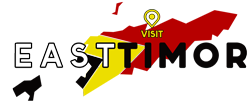Discover the captivating story behind the Timor-Leste flag, an emblem that encapsulates the rich history and spirit of independence of this remarkable nation. Dive into the symbolism and meaning behind the striking design that represents the resolve and aspirations of the Timorese people. Let’s explore the beauty and significance of the Timor-Leste flag together.
Is Timor-Leste still a country?
Absolutely! Timor-Leste, recognized as a sovereign nation, gained its formal independence in 2002. It’s remarkable to note that the Timor-Leste flag, with its distinct design featuring a red field and a black triangle, has become a symbol of the country’s identity and independence.
Is Timor-Leste rich or poor?
Timor-Leste continues to face challenges in economic development, remaining one of the least affluent nations in East Asia and relying heavily on external aid. The country’s economy predominantly relies on oil and gas, making up a significant portion of its GDP and government revenue. However, this resource-intensive industry has not translated into substantial job creation, impacting the overall economic situation in the country.
Who owns Timor?
Timor island is divided into two parts: the western side belongs to Indonesia, with its provincial capital in Kupang, while the eastern part, with Dili as its capital, used to be a Portuguese territory.

Why is Timor-Leste in two parts?
Timor-Leste is divided into two parts due to historical factors related to colonialism. The Portuguese initially traded with Timor in the 16th century and eventually colonised the island. After skirmishes with the Dutch, a treaty in 1859 led Portugal to cede the western half of the island. This division has had a lasting impact on the country’s history and development.
How old is Timor-Leste?
Timor-Leste, also known as East Timor, gained its independence on 20 May 2002, making it the first new sovereign state of the 21st century. This marked a significant milestone in the country’s history and paved the way for establishing diplomatic relations with Indonesia and joining ASEAN.
Why is Timor-Leste a poor nation?
Timor-Leste struggles with poverty due to a combination of factors such as limited access to water, a lack of crop diversity, and the impact of climate change. These issues contribute to high rates of food insecurity, with over half of children under five experiencing stunted growth. More info
Why is Timor-Leste famous?
Timor-Leste has gained notoriety for its captivating coral reefs, stunning beaches, and rugged mountains, drawing in a growing number of global wanderers eager to explore its rich cultural heritage. More info
What nationality is Timor-Leste?
Timor-Leste’s flag showcases its rich heritage and unique identity. The nationality of Timor-Leste is Timorese, with a population of approximately 1,100,000. The official languages are Portuguese and Tetum, while English and Bahasa Indonesia serve as working languages. This diverse nation is deeply rooted in its Catholic faith, with 96.5% of the population adhering to the religion.
What is the full name of Timor-Leste?
The full name of Timor-Leste is the Democratic Republic of Timor-Leste. Located in Southeast Asia, it’s positioned on the southernmost edge of the Indonesian archipelago, northwest of Australia, with Dili as its capital city.
What does Timor Lorosae mean?
Timor Lorosae, also known as Timor-Leste, translates to East Rising Sun. The name Timor comes from the Indonesian and Malay word timur, which means east, while leste in Portuguese also means east. So essentially, Timor-Leste literally means Eastern-East. In the local Tetum language, it is referred to as Timor Lorosa’e, which interestingly translates as East Rising Sun.
How many Chinese are in Timor-Leste?
Around 4,000 Chinese individuals are part of the vibrant community in Timor-Leste. Prior to 1975, there was a larger Chinese population of around 8,000, but many left during the Indonesian occupation. Today, a significant number of Chinese-Timorese call Timor-Leste home, while others have established themselves abroad. More info
What does Timor-Leste flag represent?
The flag of Timor-Leste, adopted in 2002, holds deep symbolism. Its black represents centuries of colonial repression, while the yellow signifies the struggle for independence. The red embodies the suffering of the East Timorese people, and the white star offers hope for the future.
Who designed Timor-Leste flag?
The creation of Timor-Leste’s flag is attributed to Natalino Leitão, a legendary resistance fighter. He designed the current national flag, drawing inspiration from the Fretilin flag, just before the country proclaimed independence from Portugal on 28 November 1975. More info
What is the motto of Timor-Leste?
The motto of Timor-Leste is UNIDADE, ACÇÃO, PROGRESSO which translates to UNITY, ACTION, PROGRESS. This motto represents the fundamental values that guide the nation’s political and moral identity, shaping the direction of the country and its people.
How big is the flag of Timor-Leste?
The flag of Timor-Leste measures 150cm x 90cm. It proudly represents the nation with its size and distinctive design.
Conclusion
In conclusion, the Timor-Leste flag carries profound symbolism—a powerful representation of the nation’s history, struggle, and hope for the future. Designed with intention and purpose, this emblem stands as a testament to the resilient spirit of the Timorese people.


Stay connected